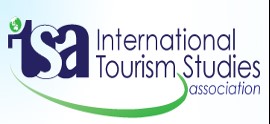WHAT LIES AHEAD FOR POST-PANDEMIC URBAN TOURISM IN JAKARTA? AN OVERVIEW OF EXISTING TOURISM RESOURCES AND THEIR MARKETING STRATEGIES
Short Abstract
The purpose of this study is to present a brief overview of urban tourism resources in Jakarta, the capital of Indonesia and to assess what challenges and opportunities lie ahead for them in the post-pandemic world. The study is derived from students project assignment which explore Jakarta’s urban tourism resources, namely the historic area of Jakarta Old Town, the Betawi native ethnic group village of Setu Babakan, and the cultural theme park Miniature of Beautiful Indonesia. The study employs observations and interviews with managers of these tourists’ sites as well as visitors. A SWOT analysis is done after data were gathered. From field observations it can be confirmed that the three areas exhibit some characteristics of contemporary urban tourism. However, albeit each is in different stage of development, they face similar challenges in tourism marketing, developing interpretation, and communicating their values. Opportunities in the post-pandemic world for these three different places are the latest changes in tourists’ preference for outdoor setting and spacious area.
Type of Submission
Paper Presentation
Location
Gran Canaria
Recommended Citation
Mbulu, Yustisia Pasfatima Dr.; Kausar, Devi Roza PhD; Satyaningrum, Firdha Wulan; and Widyaqsha, Alycia Cinta, "WHAT LIES AHEAD FOR POST-PANDEMIC URBAN TOURISM IN JAKARTA? AN OVERVIEW OF EXISTING TOURISM RESOURCES AND THEIR MARKETING STRATEGIES" (2023). ITSA 2022 Gran Canaria - 9th Biennial Conference: Corporate Entrepreneurship and Global Tourism Strategies After Covid 19. 11.
https://docs.lib.purdue.edu/itsa/ITSA2022/ITSA2022/11
Participation
Not sure
WHAT LIES AHEAD FOR POST-PANDEMIC URBAN TOURISM IN JAKARTA? AN OVERVIEW OF EXISTING TOURISM RESOURCES AND THEIR MARKETING STRATEGIES
Gran Canaria
The purpose of this study is to present a brief overview of urban tourism resources in Jakarta, the capital of Indonesia and to assess what challenges and opportunities lie ahead for them in the post-pandemic world. The study is derived from students project assignment which explore Jakarta’s urban tourism resources, namely the historic area of Jakarta Old Town, the Betawi native ethnic group village of Setu Babakan, and the cultural theme park Miniature of Beautiful Indonesia. The study employs observations and interviews with managers of these tourists’ sites as well as visitors. A SWOT analysis is done after data were gathered. From field observations it can be confirmed that the three areas exhibit some characteristics of contemporary urban tourism. However, albeit each is in different stage of development, they face similar challenges in tourism marketing, developing interpretation, and communicating their values. Opportunities in the post-pandemic world for these three different places are the latest changes in tourists’ preference for outdoor setting and spacious area.
https://docs.lib.purdue.edu/itsa/ITSA2022/ITSA2022/11


